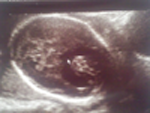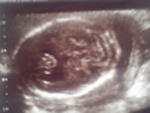Absence of the Corpus Callosum
Description
Agenesis of the Corpus Callosum (ACC) is a rare birth defect (congenital disorder) in which there is a complete or partial absence of the corpus callosum.

Agenesis of the corpus callosum occurs when the corpus callosum, the band of tissue connecting the two hemispheres of the brain, fails to develop normally, typically in utero, resulting in disconnected brain hemispheres. The development of the fibers which would otherwise form the corpus callosum become longitudinally oriented within each hemisphere and form structures called Probst Bundles.
In addition to agenesis of the corpus callosum, other callosal disorders include hypogenesis (partial formation), dysgenesis (malformation) of the corpus callosum, and hypoplasia (under formation).
Callosal disorders can only be diagnosed through a brain scan. They may be diagnosed through an MRI, CT Scan, prenatal ultrasound, or prenatal MRI. Colpocephaly refers to agenesis of the corpus callosum along with the splenium.
Cause
Agenesis of the corpus callosum is caused by disruption to development of the fetal brain between the 5th and 16th week of pregnancy.In most cases, it is not possible to know what caused an individual to have ACC or another callosal disorder. However, research suggests that some possible causes may include chromosome errors, inherited genetic factors, prenatal infections or injuries, prenatal toxic exposures, structural blockage by cysts or other brain abnormalities, and metabolic disorders.
Genetic profile
Until recently, the medical literature did not indicate a connection among many genetic disorders, both genetic syndromes and genetic diseases, that are now being found to be related. As a result of new genetic research, some of these are, in fact, highly related in their root cause despite the widely-varying set of medical symptoms that are clinically visible in the disorders. Agenesis of the corpus callosum is one such disease, part of an emerging class of diseases called cilopathies. The underlying cause may be a dysfunctional molecular mechanism in the primary cilia structures of the cell, organelles which are present in many cellular types throughout the human body. The cilia defects adversely affect "numerous critical developmental signaling pathways" essential to cellular development and thus offer a plausible hypothesis for the often multi-symptom nature of a large set of syndromes and diseases. Known ciliopathies include primary ciliary dyskinesia, Bardet-Biedl syndrome, polycystic kidney and liver disease, nephronophthisis, Alstrom syndrome, Meckel-Gruber syndrome and some forms of retinal degeneration.
Signs and symptoms
Signs and symptoms of ACC and other callosal disorders vary greatly among individuals.

However, some characteristics common in individuals with callosal disorders include vision impairments, low muscle tone (hypotonia), poor motor coordination, delays in motor milestones such as sitting and walking, low perception of pain, delayed toilet training, and chewing and swallowing difficulties. Laboratory research has demonstrated that individuals with ACC have difficulty transferring more complex information from one hemisphere to the other. They also have been shown to have some cognitive disabilities (difficulty in complex problem solving) and social difficulties (missing subtle social cues), even when their Intelligence Quotient is normal. Recent research suggests that specific social difficulties may be a result of impaired face processing. Unusual social behavior in childhood is often mistaken for or misdiagnosed as Asperger's syndrome or other autism spectrum disorders. Other characteristics sometimes associated with callosal disorders include seizures, spasticity, early feeding difficulties and/or gastric reflux, hearing impairments, abnormal head and facial features, and mental retardation.
Associated syndromes and conditions
Some syndromes that frequently include ACC are Aicardi syndrome, Andermann syndrome, Shapiro syndrome, Acrocallosal syndrome,septo-optic dysplasia, Mowat-Wilson syndrome and Menkes syndrome. Some conditions that are sometimes associated with ACC include maternal nutritional deficiencies or infections, metabolic disorders, Fetal alcohol syndrome, and orofacial abnormalities.
Treatment
There are currently no specific medical treatments for callosal disorders, but individuals with ACC and other callosal disorders may benefit from a range of developmental therapies, educational support, and services. It is important to consult with a variety of medical, health, educational and social work professionals. Such professionals include neurologists, neuropsychologists, occupational therapists, physical therapists, speech-language pathologists, pediatricians, geneticists, special educators, early intervention specialists, and adult service providers.
Prognosis
Prognosis varies depending on the type of callosal abnormality and associated conditions or syndromes. It is not possible for the corpus callosum to regenerate or degenerate (i.e., the corpus callosum will not regrow or diminish). Although some individuals with callosal disorders have average intelligence and lead normal lives, neuropsychological testing reveals subtle differences in higher cortical function compared to individuals of the same age and education without ACC.
Source:[http://www.wikipedia.org]